Whether you plan to build your home or opt for renovation, making the right decisions is integral. Ranging from the kinds of elements and appliances you want in your home to the choice of materials, tiles, and everything in between, choosing the right product is essential to enhance the performance and reliability of the structures. In the domain of home interior and furniture designs for a home or office, the two most renowned wooden boards that have built a strong reputation with superior features are MDF boards and particle boards.
Post your Requirement
In the construction industry, materials MDF (Medium-Density Fiberboard) and particleboard are two popular choices in furniture manufacturing, cabinetry, and DIY projects due to their distinct features that help to build strong and sturdy structures that excel at customer satisfaction. In the blog, we will delve deeper into the two materials that have become preferred choices due to a diverse range of features.
What Is The MDF Board?

Stands for Medium-Density Fiberboard, the MDF board refers to engineered wood products that are made with fine wood fibres. The residual hardwood and softwood are broken down into fine fibres and then these fibres are stuck together using glue, wax, or resins and then put into a hot machine that compresses the fibres to form a board. This proves to be a strong and dense material that helps to build an effortless surface to paint and cut out designs making it a great choice for different kinds of home interior design applications.
The material of MDF boards is considered to be incredibly economical, durable, and quite a popular choice for modular products. The processed MDF in the present dynamics proves to be more compact, dense, and homogenous than plywood and the advancements in the construction industry have also contributed to its improved durability and strength. The MDF boards are usually used in applications such as furniture pieces requiring smooth finishes, cabinet doors, decorative panels and moldings, shelving, and other structures.
Pros And Cons Of MDF Boards
Like every other element in this world, the material of MDF also has its own set of advantages and disadvantages. Understanding these helps the clients to make an informed decision by careful consideration of each and every factor that contributes to the performance, reliability, and value-for-money of the structures. Let’s dive deeper into the pros and cons of the material of MDF for a detailed discussion.
Advantages Of MDF Boards
- Cost-Effective: The material has become a preferred choice with its inexpensive MDF board price which makes it an economical option with premium features. There can be exceptions when you compare the materials of high-end MDF to some of the less costly forms of timber but in a general sense, the MDF boards are easy to find and are typically more affordable than other options.
- Eco-Friendly: One of the key features of the material is that it is made with the recycling process of wood. This is one of the reasons that make the MDF boards an eco-friendly and sustainable option. The material is gaining attention of the new home builders and other construction professionals due to its reliable option in green initiatives.
- Strong and Durable Structures: The MDF boards are typically stronger and denser than particleboard, which makes them less likely to chip or crack under stress. It is the prominent feature of the engineered woods that they can overperform their competitor in terms of moisture resistance and performance.
- Smooth Surface And Versatile Options: The MDF boards have a smooth surface and uniform texture that makes the processes of painting and laminating easier, more effective, and incredible. Additionally, the easy-to-cut, sand, and shape features make it suitable for intricate and custom designs.
- Customization Options: The endless options for finishes and paintings make the MDF boards remarkable options for a diverse range of applications. Additionally, the moisture-resistant and fire-resistant variants of the material make it an ideal choice for clients wanting their specific kind of structures.
Disadvantages Of MDF
- These boards are extensively used for the manufacturing of units such as bookcases, wardrobes, kitchen cabinetry, and other elements. However, it carries a significant disadvantage of incapability to withstand huge loads. With too much weight, the MDF boards can sag, crack, or split.
- The material of MDF can absorb water or moisture faster than wood. This makes the material prone to swelling up and the associated damage. So it is often recommended to not use the material for countertops, sinks, or other water-prone regions.
- The manufacturing of the material includes the cutting or sanding of the materials. This can significantly produce fine dust that can be harmful to the lungs and eyes of the workers. Therefore the production of the material requires proper ventilation and safety measures.
- The MDF boards are in most cases more expensive as compared to the particle boards which makes it a less affordable option for many people. Even with the premium features, it is often recommended to consider the MDF board price for the structures.
What Are Particle Boards?
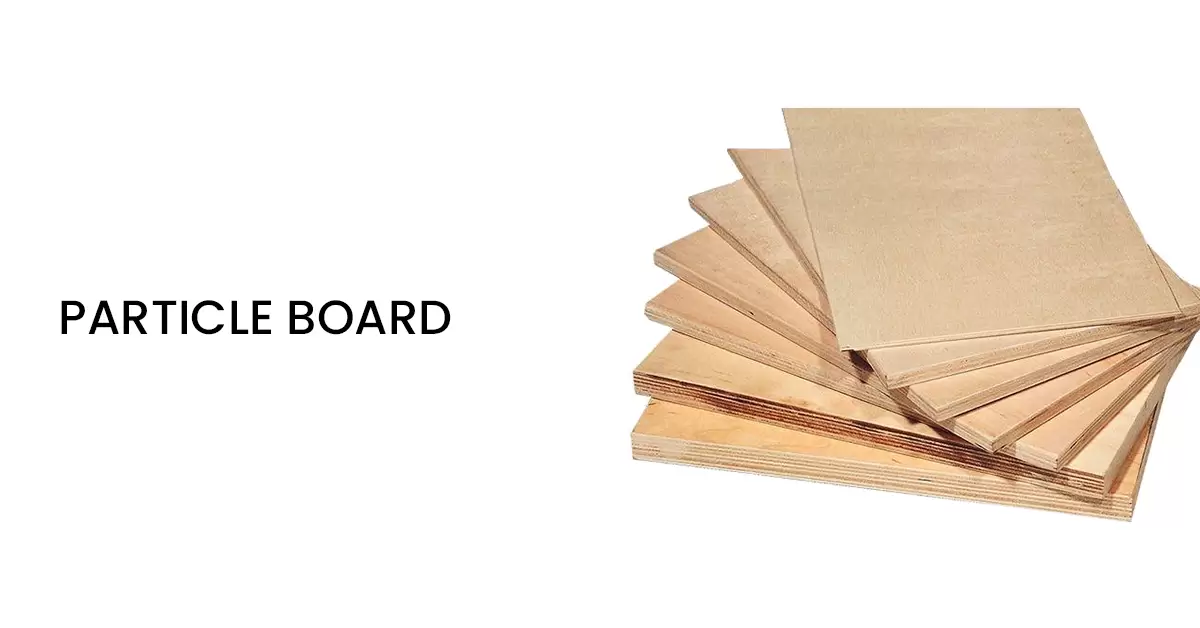
The particle boards are other kinds of inexpensive products made using waste wood materials and are extensively used in the construction and design industry due to their advanced features and performance. This is also an engineered wood product made by compressing wood chips, shavings, or sawdust with resin. This proves to be a highly economical option that also proves to be eco-friendly as it is made with recycled timber or other wood structures. Often used for low-end home décor furniture.
It is a light material that is typically less dense than other materials thereby the gaps between the particles are superior. This is the material that is particularly popular for the manufacturing of modular kitchens or kitchen renovations. In most cases, the finishing options of laminate or veneer are used to finish a particle board’s surface to give it a better and contemporary look.
Pros And Cons Of Particle Boards
While we considered the advantages and disadvantages of the MDF boards, it is yet too soon to make a decision. You also need to consider one of the greatest competitors of the material in the industry, particle boards. Let’s dive into the pros and cons of particle boards for making a smart decision.
Advantages Of Particle Boards
- Lightweight Nature: One of the most prominent advantages of these wooden boards is that they are lightweight due to the low density of their structure. This makes them easy to handle, transport, and use for a versatile range of applications. Along with their lightweight properties, they also possess a better ability to withhold nails and screws as compared to MDF boards.
- Thermo-acoustic Insulation: Another key advantage that makes the material a superior choice is its insulation capabilities which enhance its performance and reliability in the long run. Its incredible soundproofing capabilities make it an ideal option for artificial ceilings and speakers for auditoriums, theatres, and other similar spaces.
- Affordable Material: The most important factor in the decision-making is the costs and prices of the structures. So to your advantage, we wish to tell you that the particle boards are typically low in cost as compared to others such as solid wood, plywood, and even MDF making it a remarkable decision in terms of finances.
- The Grace of Elegance: The particle boards can be easily cut, drilled, painted, and glued making it an excellent option with enhanced standards of durability and performance. Additionally, it is an easy-to-clean and maintain material making it a perfect choice for people who do not wish to spend hours cleaning every day. Moreover, the particle boards come in a variety of densities and thicknesses making them versatile for different applications.
- Environmental Friendliness: In the dynamics where the environmental consciousness of the people is constantly rising, particle boards have emerged as a great option. This material is an eco-friendly material that is typically made with waste wood products such as wood chips, shavings, and even sawdust.
- Smooth Surfaces: The particle boards have a smooth and flat surface making them ideal for different kinds of decorative finishes or laminates. This promotes the easy sticking of the veneer and other kinds of laminate materials on the surface of the structures thereby contributing to its beauty and grace.
Disadvantages Of Particle Boards
- The key drawback of using particle boards is that they are not very strong and thus need more strength as compared to other fiberboards. It has a low density, so it may get destroyed during shipping and thus need to be handled with care.
- The particle boards do not have a good level of resistance capability against moisture or humidity which challenges its durability, especially in the Indian temperatures. The particle boards can expand in contact with moisture making it lose its charm soon.
- Particle boards have low durability.
- In most cases, the particle boards feature a shorter lifespan with less durability as compared to the medium-density fiberboard and plywood options due to their low strength and prone to moisture damage.
- The particle boards are not very sturdy and durable making them not useful for heavy-duty applications. Additionally, the particle boards that are manufactured with the help of resins are harmful to health making them not a reliable option for the clients.
MDF vs Particle Board: A Comparative Analysis
|
Factors to Consider |
MDF Boards |
Particle Boards |
|
Costs |
Expensive But Worth the Price. | Cheaper as compared to MDF. |
|
Strength |
Higher due to the higher density. Medium if compared to wood. | Less strength due to less density as compared to MDF |
|
Durability |
More durable with more strength. | Less durable as prone to damage. |
|
Moisture-Resistance |
To some extent, it is moisture resistant but yet susceptible to water damage. | It is very susceptible to water damage which also affects its durability. |
|
Looks |
MDF typically has a smooth and consistent finish with no wood grains visible on these boards. | The particle board is consistent but has a rough finish due to the wood shavings and chips. |
|
Lifespan |
Longer lifespan due to higher density and strength, especially when well-maintained. | Shorter lifespan, especially in high-use or moist environments. |
|
Voids |
Densely compacted boards. | Loosely compacted boards. |
|
Weight |
Heavier than particle boards, which can make handling and installation more challenging. | Lighter as compared to MDF boards, thus easier to transport and install. |
|
Applications |
Ideal for high-end furniture, decorative moldings, cabinetry, shelving, and projects requiring painting. | Common in budget furniture, flat-pack designs, and cabinetry carcasses where cost is a priority. |
|
Composition |
Made with fine wood fibres, compressed with wax and resin. | Made from wood chips, shavings, and sawdust bonded with resin. |
|
Load carrying capacity |
It is stronger and thus can function quite well in heavy-duty applications. | It is lightweight and heavy load can damage the particle boards. |
Particleboard vs MDF Boards: Which One Should I Choose?
To make the right decision, you need to carefully understand the benefits and shortcomings of each and then decide which can prove to be a better choice based on your needs and preferences. The needs and requirements of each consumer are different and thus the decision is also is. Some of the few factors that need to be considered before making a decision are as follows:
- Budget-Friendliness: If budget limitations are one of the companions of your project, it would be better to go for particle boards for different applications. The MDF Board price is significantly higher as compared to that of [article boards but also comes with enhanced features.
- Durability And Finish: If you wish to have wardrobes, cabinetry, shelves, and other furniture elements with a smooth finish and better durability, MDF boards are a suitable option. The particle boards are usually suitable for cabinet backs and internal shelves where laminates and veneer can be properly used.
- Moisture Resistance: For the manufacturing of structures in bathrooms, kitchens, or laundry rooms, the MDF boards are a better option with superior standards of moisture resistance. On the other hand, particle boards need to be specialized with moisture-resistant capabilities to be used for such kinds of applications.
- Aesthetic Preferences: If your project requires high-quality paint or intricate designs, MDF boards are the perfect choice with their smooth finishes and beautiful designs.
Make An Informed Decision With Smart Analysis
When we plan to buy a new place, build a new one or just opt for renovation, there are a variety of factors that we need to consider, the kinds of materials or elements that need to be used, their reliability, functionality, strength, and other features. The different features and quality of the materials should be up to the needs and preferences of the clients. In this blog, we have differentiated between the two popular materials for furniture, MDF and particle boards, to have you clear of their qualities and then choose which one would be a better choice for you.
Read Also: Top 5 Most Popular Wooden Boards For Furniture Industry

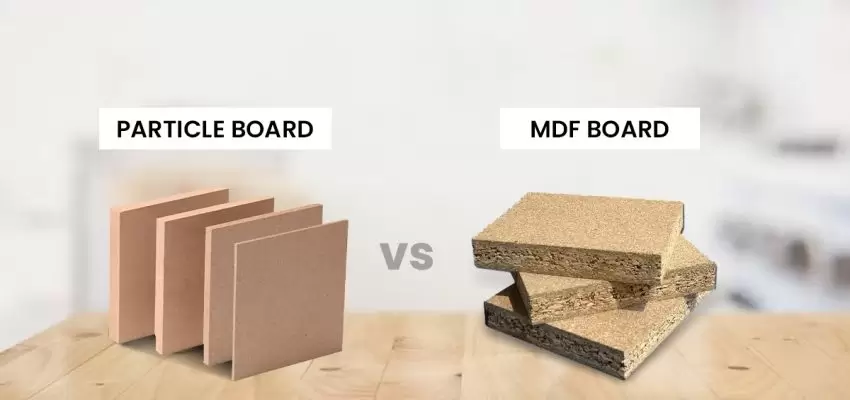
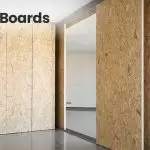
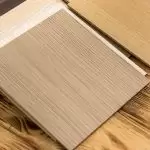
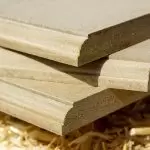
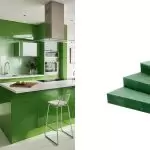

















Post A Comment